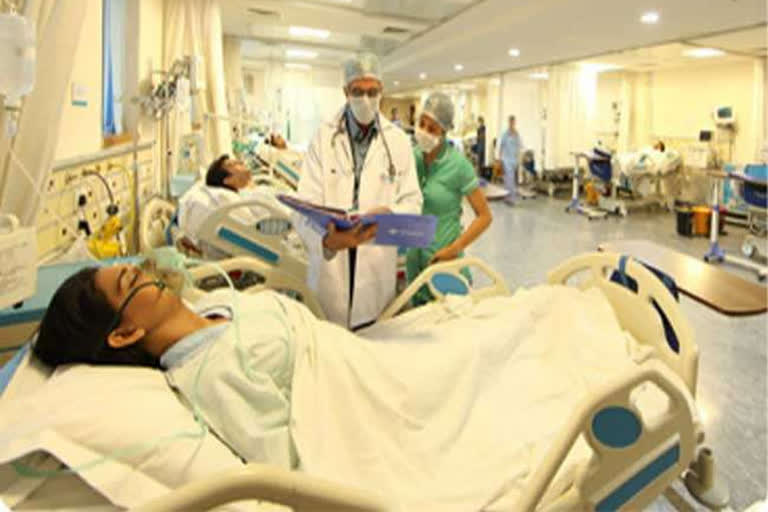London (UK): In what may set alarm bells ringing as countries across the world struggle with their healthcare facilities amidst the COVID-19 pandemic, a new simulation study has revealed that coronavirus has the potential to spread across nearly half the surfaces of a hospital ward from a single spot in an isolated room in just 10 hours.
The study, published as a letter in the Journal of Hospital Infection, aimed to safely simulate how SARS-CoV-2, the virus that causes COVID-19 may spread across surfaces in a hospital.
The researchers from University College Hospital (UCL) and Great Ormond Street Hospital (GOSH) in the UK noted that virus DNA left on a hospital bed rail was found in nearly half of all sites sampled across a ward within 10 hours, and persisted for at least five days.
Instead of using the SARS-CoV-2 virus, the researchers artificially replicated a section of DNA from a plant-infecting virus, which cannot infect humans.
They added the virus to a millilitre of water at a similar concentration to SARS-CoV-2 copies found in infected patients' respiratory samples.
Researchers placed the water containing this DNA on the hand rail of a hospital bed in an isolation room — meant for higher-risk or infected patients — and then sampled 44 sites across a hospital ward over the following five days.
Read:Mask, the Ultimate Savior in Covid-19
They found that after 10 hours, the surrogate genetic material had spread to 41 per cent of sites sampled across the hospital ward, from bed rails to door handles to arm rests in a waiting room to children's toys and books in a play area.
This increased to 59 per cent of sites after three days, falling to 41 per cent on the fifth day, according to the researchers.
"Our study shows the important role that surfaces play in the transmission of a virus and how critical it is to adhere to good hand hygiene and cleaning,” said Lena Ciric from UCL.
"Our surrogate was inoculated once to a single site, and was spread through the touching of surfaces by staff, patients and visitors. A person with SARS-CoV-2, though, will shed the virus on more than one site, through coughing, sneezing and touching surfaces," Ciric said.
